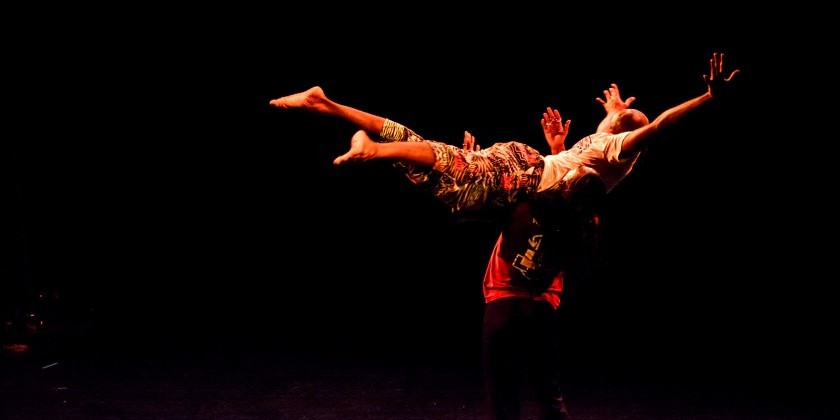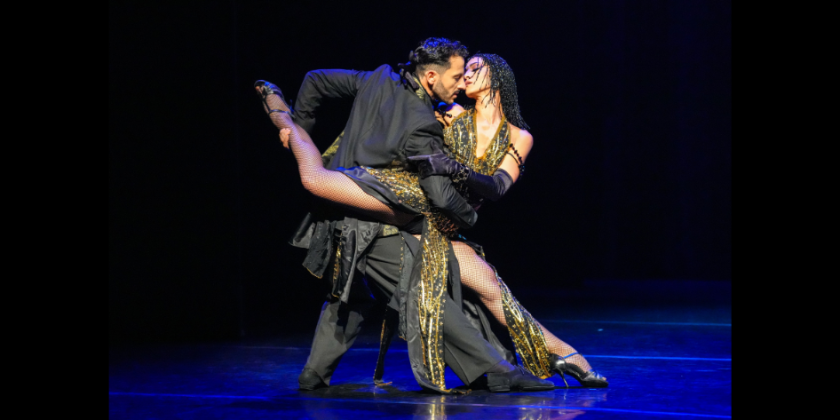A Dance Enthusiast's A to Z: R is for Melissa Riker and Walter Rutledge


Melissa Riker
Biography
Melissa Riker is Artistic Director and Choreographer of Kinesis Project Dance Theatre. She is a New York City dancer and choreographer who emerged as a strong performance and creative voice as the NYC dance and circus worlds combined during the '90s. Riker’s dances and aesthetic layer her training as a classical dancer, martial artist, theatre choreographer and aerial performer. She creates dances on site and in context. Riker invents large-scale outdoor performances and spontaneous moments of dance. Headshot: Homer Frizzell / Dance Image: Stephen Delas Heras
Walter Rutledge
Biography
Bronx native Walter Rutledge has worked in the arts for over thirty years. He trained at the Harkness House for Ballet Arts and became a member of the Harkness Ballet of New York. During his tenure with Harkness he received the opportunity and encouragement to develop his choreographic and directorial skills.
Rutledge became the Associate Artistic Director/Choreographer in Residence of the Nanette Bearden Contemporary Dance Theatre. The seven-year association produced over 40 ballets, including collaborations with renowned artist Romare Bearden, choreographer Alvin Ailey, recording artists Roberta Flack, Dizzy Gillespie, and tap dancer Bunny Briggs. His original productions Souls The Calah starring icon Eartha Kitt, On The Block (After Bearden) with Dudley Williams, Hope Clark and Loretta Abbott, and Soulful Noel with Tony Award-winner Jennifer Holliday and Grammy Award winning gospel luminaries Ricky Dillard, Tramaine Hawkins, Dr. Bobby Jones, and Donald Lawrence received international recognition. In 2014, Rutledge became the co-founder and Editor-in-Chief of O&A NYC Magazine, an entertainment-based publication. Photos courtesy of the artist.
My earliest memory of dancing : _______________
Riker:
At age 3 — I know there was lots of dancing before that. My mom will tell you.
Rutledge:
Hearing the girls scream while I was dancing at a party in 4th grade.
What was the light bulb moment when you realized you were going to be a dancer?
Riker:
Age 11 or 12 — I knew I wanted it badly enough. I was willing to do anything for dance. Also, I had clear visions of dancing. It was everywhere. At 15, I realized I was also having clear visions of dances I had never witnessed (choreography).
Rutledge:
When I arrived at Harkness House, they asked me at the audition [to be a choreographer] and six days later I was working with dancers.
What gives you energy?
Riker:
Witnessing open spaces, sunrises, the sky changing color, being with a creative process and staying with it, time alone in the studio just moving and dancing, Kinesis Project dancers in rehearsal and performance, and seeing our audiences shift from lightly curious to invested.
Rutledge:
A cause — something to believe in and fight for.
A perfect day includes____________
Riker:
coffee, a fire escape, sunrise to-do list, time in the studio alone or with dancers, and time with collaborators and advisors on our big ideas.
Rutledge:
laughing a lot and out loud.
What event (dance-related or not) has transformed you?
Riker:
I survived violence and the justice system. I am sure those experiences drove me to be bold and to keep creative ownership of my body and expression.
The Gates installation in Central Park and seeing Andy Goldsworthy’s stone wall at Storm King. Both made an impression on my sense of scale, what is possible, and the undeniable power of color and subtle (or not so subtle) influences on place.
Rutledge:
In 2014, a close family member was in a car accident. Becoming his advocate and helping him recover was faith affirming.
What is/are your favorite dance move(s)?
Riker:
Ha! I love to turn. Spinning comes easy, but my all-time favorite movements are often the subtle, grounded things that require balance and articulation all the way though the body to find completion.
Rutledge:
Whatever I’m creating at the moment.
The most expressive part of the body is _________
Riker:
the back. Quick runner ups [are] shoulders and face.
Rutledge:
my hands.
What do you consider your greatest achievement thus far?
Riker:
Establishing Kinesis Project as a “gets things done” dance company that can create transformational moments for urban spaces.
Rutledge:
Leading by example.
What is your life’s motto?
Riker:
Contained? Not on your life.
Rutledge:
Life is what you make it: you can either have chicken salad or chicken shit.
What is your most treasured possession?
Riker:
My notebook and clunky Frye boots. Nothing else that I treasure is actually mine.
Rutledge:
An original 1910 stereograph of the Jack Johnson/James J. Jeffries fight in Reno, Nevada.
What is your favorite post-performance meal?
Riker:
I have cravings based on venues! At St. Marks/Danspace, I want borscht from Velselka. At Judson, I need ramen on Sullivan or zoodle soup from Springbone. In general, I often need a burger — since remembering to eat prior to performing is always a challenge.
Rutledge:
Steak au Poivre or Sashimi Tuna.
If you could travel anywhere in the world where would you like to go?
Riker:
Ah! So many places!!! Brazil, Argentina, France, Spain, Japan, Jordan, Central America (all of it) …
Rutledge:
Africa from North to South, East to West.
I question_______.
Riker:
I question to create. I question how dance can continue to evolve. I also spend time with questions of how to make complex work while not alienating audiences.
Rutledge:
blind authority.
_____________ is overrated.
Riker:
Stages
Rutledge:
Dance Critics are
My greatest influence(s) is/are______.
Riker:
my brilliant friends. Playwrights Sheila Callaghan and Erin Courtney; Director Sarah Cameron Sunde; collaborators Jeremy Williams and Maura Donohue; dance activist Alice Gosti; our community of dreamers and makers: Carmen de Lavallade & Geoffrey Holder (RIP), Jill Sigman, Noémie Lafrance, Gina Gibney, and Eva Yaa Asantewaa; and further away: Pina Bausch (RIP), Andy Goldsworthy, and the Australian Women’s Circus.
Rutledge:
The Notebooks of Leonardo da Vinci, Nikita Talin (executive director Harkness House), Catherine of Aragon, and my father.
If I could switch careers I would be a _______.
Riker:
an international studio professor, potter, or sculptor.
Rutledge:
restauranteur.
I would like to learn to ____________.
Riker:
make pottery.
Rutledge:
Tango.
One of the jobs/projects I most enjoyed was _______ because______.
Riker:
was placing Secrets and Seawalls on Wavertree at South Street Seaport because we were on a gorgeous ship, creating, every day.
Rutledge:
On The Block (After Bearden) because of the amount of time I had to research and create. And because I had known Romare Bearden well, so it became truly inspiring.
One of my favorite artists (dead or alive) dance or otherwise is ________
Riker:
Susan Marshall (dance) and Anne Sexton (writing).
Rutledge:
Picasso.
I am looking forward to ________
Riker:
how the dance and performance community can continue to lift one another up — we are in an exciting time of coming together, learning together and celebrating different voices. I hope Kinesis Project’s ability to bring art “to the streets” via outdoor, public work, supports attention to those taking on the challenge of stages, new work, and new audiences.
Rutledge:
completing my novel.









